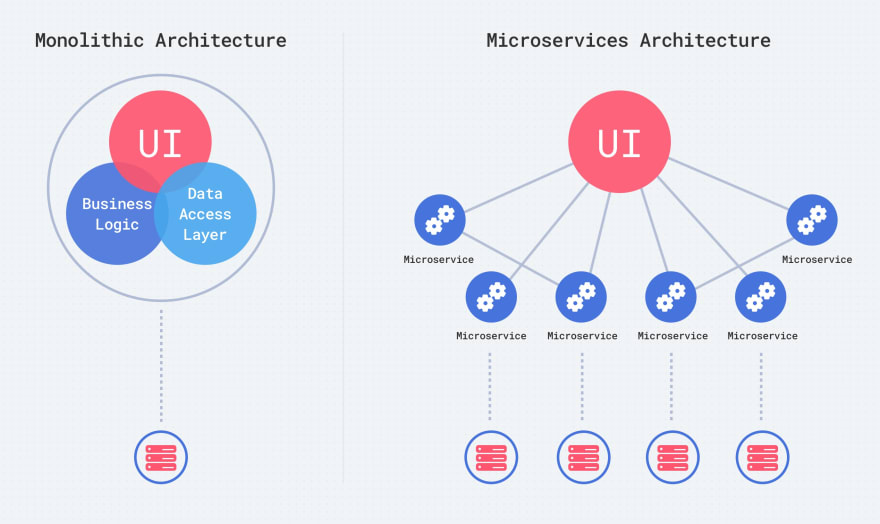Big Applications, Small Services: Understanding Microservices
Imagine a massive online store like Amazon. It's constantly evolving, adding new features and handling millions of transactions daily. How do they manage such complexity? Enter microservices!
Traditionally, software applications were built as monolithic giants – a single codebase handling everything. Scaling or changing one feature meant tinkering with the entire system, a slow and risky process.
Microservices offer a different approach. They break down an application into smaller, independent services, each with a specific function. Like a well-oiled kitchen, each service focuses on its task: the user interface might be one service,the shopping cart another, and the payment processing yet another.
Benefits of Microservices:
- Speed & Agility: Independent services can be developed, tested, and deployed faster. Imagine updating the payment system without affecting the product listings.
- Scalability: Need to handle more traffic? Simply scale up the specific service struggling, not the entire application.
- Resilience: If one service fails, others can keep functioning, minimizing downtime for the entire application.
- Team Ownership: Smaller, focused services allow dedicated teams to specialize and own their piece of the puzzle.

Image source - https://dev.to/alex_barashkov/microservices-vs-monolith-architecture-4l1m
Examples in Action:
- Netflix: Delivers a seamless streaming experience by using microservices for content delivery, recommendations,and user accounts.
- Uber: Manages complex logistics with microservices for rider requests, driver allocation, and real-time mapping.
- Amazon: Their vast e-commerce platform relies on microservices for product listings, shopping carts, and the one-click checkout experience.
Microservices aren't a silver bullet: They introduce complexity in communication and coordination between services.However, for large, evolving applications, the benefits of speed, agility, and resilience make them a powerful architecture choice.
No comments:
Post a Comment